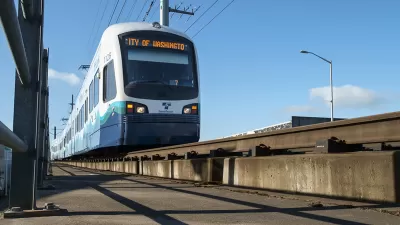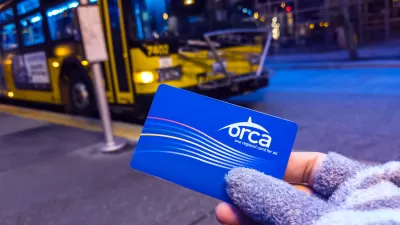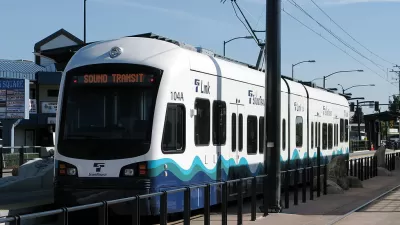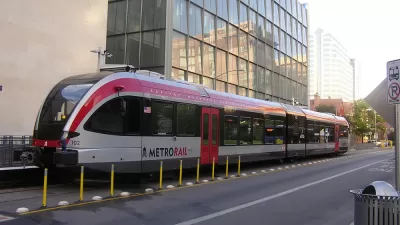Two funding sources for transit investments approved by Seattle voters in 2014 are paying dividends in 2017 in the form of improved, expanded service.

The city of Seattle recently completed an evaluation of transit investments in the Seattle Transportation Benefit District (SFBD), which is funded by a vehicle license fee and sales tax approved by voters in 2014.
"At the time, King County Metro Transit was facing funding shortfalls after exhausting reserves during the Great Recession when sales tax receipts were in decline, but by the time voters okayed the measure the proposal had flipped into one of service expansion to serve a growing city," reports Stephen Fesler.
The SFBD now produces an annual performance report on the success of the funding program in delivering investments in "transit service, ridership and on-time performance, access to frequent transit, and transportation equity initiatives such as the Youth ORCA Program and ORCA LIFT," according to Fesler.
In achieving those goals, the SFBD reports many successes—which cities with declining ridership and declining service should both envy and emulate.
Summing up the second year, the STBD reports that access to frequent transit service is way up from where it was in 2015 and surpassing current goals. Additionally, nearly 2,700 youth participated in a free transit pass program, and ridership on several RapidRide lines is up by double digits since 2015. Leading the pack in growth was the RapidRide C which grew 40% since 2015, averaging 11,600 daily rides by last count.
The second annual report is only the latest evidence of Seattle's leadership in public transit. In October, Planetizen reported on Seattle's increasing transit ridership, after repeatedly noting the city's declining number of solo car commuters and increasing adoption of alternative transportation modes.
FULL STORY: Looking Back on Two Years of Investment in Seattle Transit

Alabama: Trump Terminates Settlements for Black Communities Harmed By Raw Sewage
Trump deemed the landmark civil rights agreement “illegal DEI and environmental justice policy.”

Planetizen Federal Action Tracker
A weekly monitor of how Trump’s orders and actions are impacting planners and planning in America.

The 120 Year Old Tiny Home Villages That Sheltered San Francisco’s Earthquake Refugees
More than a century ago, San Francisco mobilized to house thousands of residents displaced by the 1906 earthquake. Could their strategy offer a model for the present?

Ken Jennings Launches Transit Web Series
The Jeopardy champ wants you to ride public transit.

BLM To Rescind Public Lands Rule
The change will downgrade conservation, once again putting federal land at risk for mining and other extractive uses.

Indy Neighborhood Group Builds Temporary Multi-Use Path
Community members, aided in part by funding from the city, repurposed a vehicle lane to create a protected bike and pedestrian path for the summer season.
Urban Design for Planners 1: Software Tools
This six-course series explores essential urban design concepts using open source software and equips planners with the tools they need to participate fully in the urban design process.
Planning for Universal Design
Learn the tools for implementing Universal Design in planning regulations.
Clanton & Associates, Inc.
Jessamine County Fiscal Court
Institute for Housing and Urban Development Studies (IHS)
City of Grandview
Harvard GSD Executive Education
Toledo-Lucas County Plan Commissions
Salt Lake City
NYU Wagner Graduate School of Public Service





























